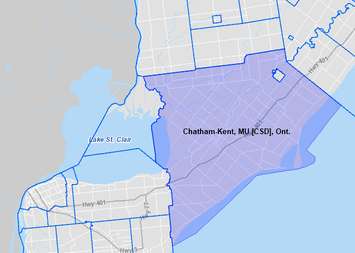The population in Chatham-Kent has grown slightly over the past five years, according to Statistics Canada based on the 2021 census information.
The agency reported a population growth in the municipality of 2.2 per cent from 2016 to 2021. The population grew from 102,042 to 104,316 residents in that time period, making the municipality the 57th most populated in Canada and 27th in Ontario.
Mayor Darrin Canniff said the data confirms what he had been hearing anecdotally throughout the community.
“The increase in population is not a surprise. Residents and investors are discovering the great things Chatham-Kent has to offer. Our trends in new construction and investments suggests this growth will continue in the future,” the mayor said. “In discussion with business leaders, community groups and individuals, there is a great deal of optimism about our future. We are a safe, affordable community with a great lifestyle.”
The population size and growth rate of municipalities are key indicators to help municipal policy makers and administrators plan the direct services and infrastructure their population needs, such as emergency services, schools, hospitals, roads, social services, and parks.
General Manager of Community Development Bruce McAllister said that after years of negative population growth, the municipality saw an average positive growth rate of just under 0.5 per cent per year between 2015 and 2021, which aligns with the recent preliminary growth forecasts that were just prepared, and he anticipates this rate of growth to continue for years to come.
“We have been busy promoting Chatham-Kent as great community to live and invest in,” said McAllister. “We are seeing people moving to Chatham-Kent for the lifestyle, affordability and the realization that they can work from here because we are more connected to the world than ever before.”
Statistics Canada said the rural population increased in five provinces, including Ontario from 2016 to 2021, which bucks a trend. Many rural areas often lose people who move to urban centres, said the agency. Canadians living in rural areas are also older on average than those living in urban centres and therefore the number of deaths exceeded the number of births in the rural areas of six provinces from 2016 to 2021, according to Stats Can.
The census counted just over 6.6 million Canadians (6,601,982) living in a rural area in May of 2021, which is up 0.4 per cent compared with five years earlier, but well below the pace of growth in urban areas (+6.3%). As a result, the share of Canadians living in rural areas declined for the ninth consecutive census, falling from 18.7 per cent in 2016 to 17.8 per cent in 2021.
Ontario welcomed almost twice as many permanent and temporary immigrants from 2016 to 2021 compared with the previous five-year census cycle.
"Immigrants are far more likely to settle in an urban area than a rural setting, which explains most of the difference in growth," said the agency.
The population in Windsor metropolitan area rose by six per cent in those five years, while population in the London metropolitan area jumped by 10 per cent during the same time frame.
Ontario's population grew by 5.8 per cent to just over 14.2 million people.
Canada is now home to almost 37 million people, 1.8 million (+5.2%) more than in 2016.
Statistics Canada said nearly four-fifths of the 1.8 million population increase in those five years was attributable to new arrivals, either as permanent or temporary immigrants.
The agency said the pandemic not only slowed the arrival of immigrants from other lands, it may also have impacted fertility rates. A December study suggests that one-fifth of Canadian adults under the age of 50 wanted to have fewer children than previously planned or delayed having children as a result of the pandemic. Prior to the pandemic, fertility in Canada had been decreasing since 2015 and hit a record low of 1.4 children per woman in 2020.






